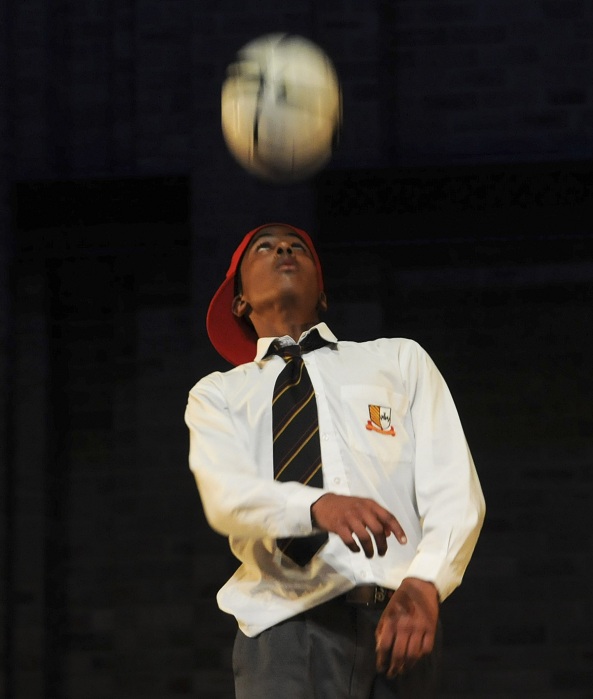Shaun Parker and the teenagers of Western Sydney
Seymour Centre, Sydney
May 27 2011
By Elizabeth Ashley
With 40 teenagers tutting, locking, hip-hopping and booty-shaking, choreographer Shaun Parker evokes the western Sydney school yard in all its multicultural diversity and underlying tension.
A collaboration with CAPTIVATE, the performing arts program of the Catholic Education Parramatta Diocese, ‘The Yard’ is both joyful and poignant, expressing a living contemporary dance language. As Shaun Parker explains, ‘what you see here is the contemporary movement language that these kids live in, the crumping, jerking, hip-hopping of their everyday.’
The recently appointed resident choreographer of the Seymour Centre in Sydney has once again explored a microcosm of real life and revealed it to us through dance. Just as in ‘Happy as Larry’, showcased at Sydney Festival 2010, Parker both confronts and enchants the audience with a snapshot of contemporary life, this time the school yard.
The students are individuals using their own unique style of movement language to intimidate, coerce, bully or attempt to cross cultural divides. As one of the dancers explains, ‘it could be about bullying, it could be about sadness and emotion.’
With a cast consisting of teenagers and a plethora of recently arrived migrants the central theme that emerges from this work is the forms of belonging that shape the life of many of the adolescents. The fluidity of belonging to an institution, a culture, a clique or a couple is explored in a multiplicity of short dances capturing the hurried and flexible lives of this “social networked” generation.
A bare stage, apart from one slippery-dip, is the yard where students – all in school uniform or sports uniform – enter, interact, form clusters, disperse, play, perform and fight. We are not mere observers but rather ‘feel’ this yard that resonates with the diversity of cultures heightened by the sensitivity and energy of adolescence.
Parker’s choreography, while emphasizing the group life of many teenagers, avoids the mass synchronized feel of many School Eisteddfod events that minimise an individual focus. Instead, Parker draws out individual personalities through their individual dance styles. Parker should be commended for blending the style and character of these relatively untrained performers, allowing their street culture to provide shape and narrative to drive the performance.
As two boys show off their hip-hop moves or twins zip around the stage adding confusion, the audience cannot help but interact with applause and laughter or gasp at the balancing acts that take place. The “Yard” that emerges is predominantly a male stronghold with all the usual braggadocio, faux aggression and testosterone that characterises street culture.
Technical musicality isn’t always strongly felt, apart from a memorable krumper who takes possession of the beat. His powerful krumping, locking and popping converts his limbs into a singular percussion instrument for the girls’ admiration. There is a standout performance also by a lanky student, who moonwalks, juggles basketballs and balances precariously using random props.
It’s a simple scenario and structure complemented by a youthful, electronic ‘street-feel’ soundtrack by Nick Wales and Bree Van Reyk.
Parker started working with a group of 40 students 3 years ago, traveling 3 times a week out to the western suburbs of Sydney. And so they come to centre-stage in Sydney’s CBD, focused and committed with their youthful enthusiasm and bravado to create a heart-warming and joyful celebration of unity in diversity using the medium of dance. In Shaun Parker’s words, ‘it celebrates the extraordinary in the ordinary.’

















